An interview with Eric Lafforgue by Desislava Velichkova
Africa’s passion by Eric Lafforgue
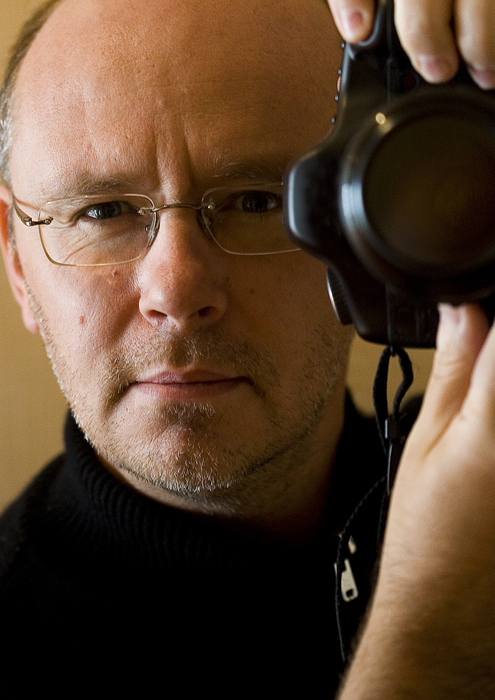
Eric Lafforgue
Born in 1964, Eric Lafforgue lives in Toulouse, France.
Ever since he was young, he has been fascinated by far away countries and travelling, and spent some time in Africa, unknowingly retracing Monfried and Joseph Kessels footsteps when he was 10 years old in Djibouti, Ethiopia and Yemen.
He started taking photographs in 2006, publishing his pictures on the internet, after leaving the world of multimedia editing in which he was involved for over 15 years.
The following year, after a trip to Papua New Guinea, Kubik took notice of his work and published a book containing his photos. Soon after, magazines from all over the world began using his work for illustrations on North Korea, the tribes of Ethiopia, etc.
He then joined the european leading agency Eyedea. In 2008, after 2 years of activity in the world of photography, his work on the people of Papua is displayed at the prestigious photojournalism festival in Perpignan.
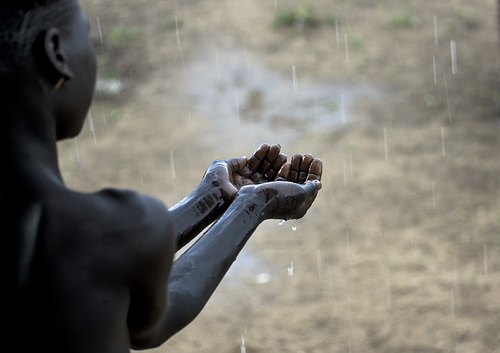
Rainy time, happy time South Ethiopia
Eric Lafforgue spends most of his time travelling the globe to share his encounters, through the perception of an ethnologist and the heart of an artist, privileging the regions or populations in danger and less usually visited countries.
Eric Lafforgue uses Hasselblad H3d-39, Leica M6, and Canon Eos D1 MarkIII .
His work has been published in:
National Geographic, CNN Traveller,Sunday times, GEO, GEO Ado, Morning Calm Korea, Ushuaia Magazine, Lonely, Planet, Bradt Guides, PPR, Le Monde des religions, PBS, The Times, Travel Business China, Periodico Diagonal, Reader’s Digest, BBC, Mindfood, Trend China, La Stampa, Sciences et Vie Jr, Cultural Survival, UNESCO, Blue Planet, Wealth, Globetrotter, Descopera, India Today, Silverkris, Il Italia, Town & Country, Sciences Humaines, Vi Menn, Get Lost, Best Life, Tomorrow, Yale.
Tell me the thing that you were most surprised by during your trip to Kenya?
The difference between North and South. South is developed, with good roads, big malls, etc.
North is complicated to reach, without tourists, and authentic people from different tribes.
I did not know there was such a gap!
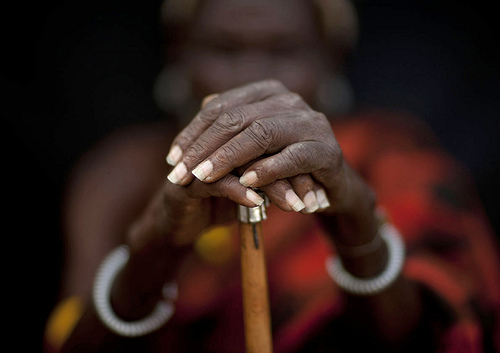
Loluguk, Turkana Chief's hands - Kenya
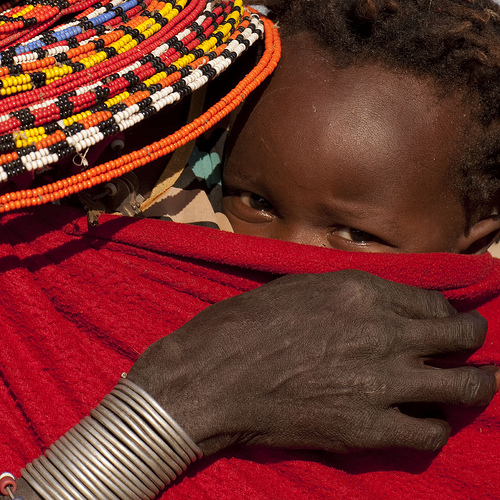
Samburu mother and kid - Kenya
Please, tell me more about these Samburu tribe warriors and the spears they are carrying!
Samburu are affiliated to Masai, but they are different. The spear he has is not for decoration. It’s a weapon against the lions and the hyenas who come at night to chase the cattle. The cattle is the only thing they own, so they need to protect it from enemies and wild animals!
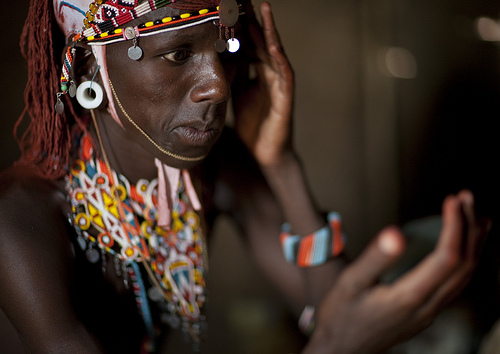
Copy of Mirror, mirror...Samburu warrior - Kenya
She’s so beautiful! What was the thing you wanted people to see when you took this photo?
I wanted to show the huge place that takes the necklace on such a small girl! The necklaces are still used , but less and less, as the Pokhot people are in an area where modernity has already came..
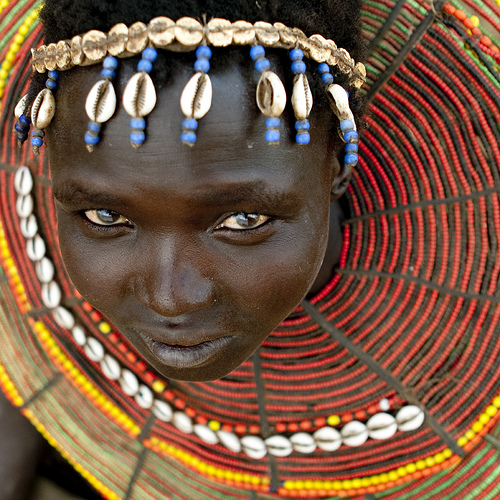
Pokot girl and necklace - Kenya
Here I would like to ask you what would be the thing she’s trying to tell you – with these eyes…
The tribe in Kenya has a lot of problems with their eyes, due to the sun and the lack of health organisations, apart from the missionaries in the north.
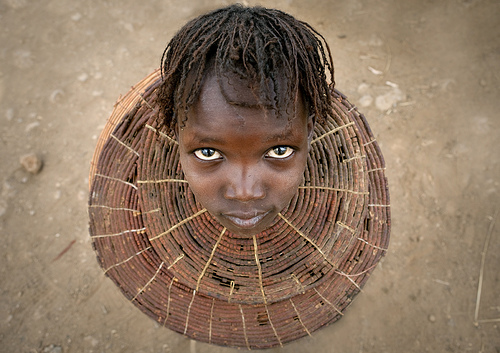
Pokot girl with the traditional necklace - Kenya
So their eyes look sometimes sad but it’s just due to illness.
She was happy to see a photographer taking care of her and wanted to see every image I took, like a top model!
Was it easy to predispose these people to you?
Yes, it’s not hard meeting tribes in Kenya. The country is safe, people are welcoming and so proud of their traditions that they like to share them with foreigners and tourists.
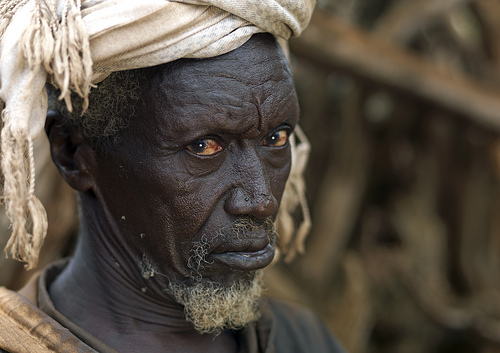
Konso chief Ethiopia
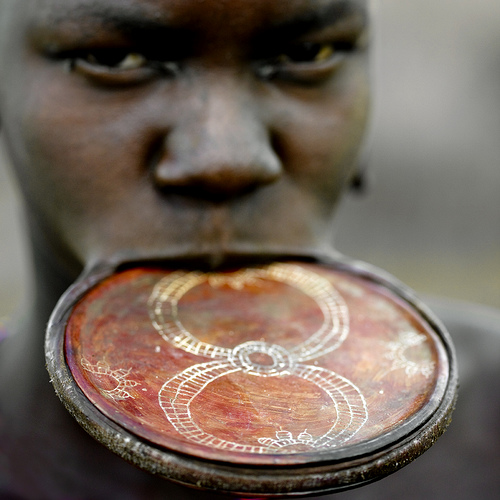
Mursi lip plate South Ethiopia
What would you tell me about this one?
Many people on the web ask me “how do you do this or that when you take a picture?”.
I wanted to show the whole thing: the people I capture and the flash I use by letting it into the frame.
It was a nice time as the whole village had a big laugh with this experience!
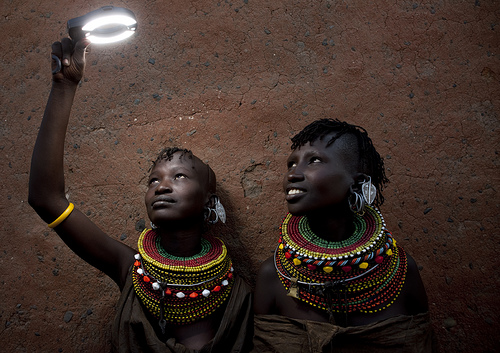
Playing with light with Turkana - Kenya
You said you bought a book about tribes and then you met the same people from the cover. It is a small world!
I bought a book about Kenya and brought it with me.
And we had the chance to meet the same Pokot people that are in the book, and especially the girl who is on the cover!
She was so happy to get the book! Same for the chief!
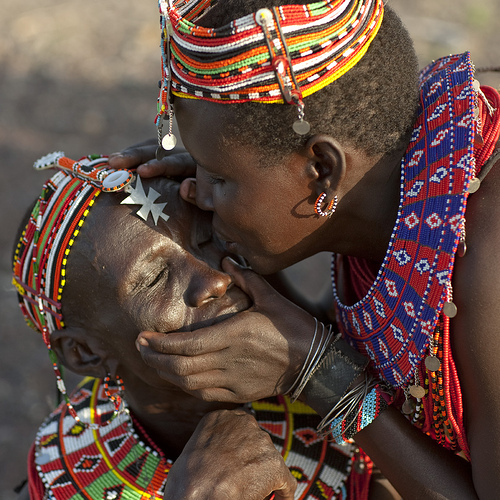
El Molo daily life removing the dust from the eye
What did you find about the El Molo tribe tends?
El Molo tends to disappear, as they mix with other tribes , and they have a big influence from Christian missionaries… They all wear a Jesus cross!
There are a few villages remaining. The one I visited is interesting as they kept the traditions.
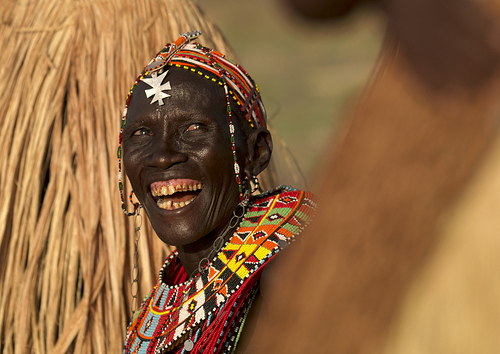
El Molo smile - Kenya
You’re saying there were a young girl that was reading mathematics book in English while you were taking photos of the village… But still you were interesting enough to make her come out of the house… Tell me the story!
She is the chief’s daughter.
When you visit a village in Kenya, you always have to ask for the chief’s permission.
Once he says it’s OK, you are treated like a member of his family!
She did not want to come out of the house as she was shy but as she saw that many people were so proud to be on pictures, she decided to be a part of the fun too!
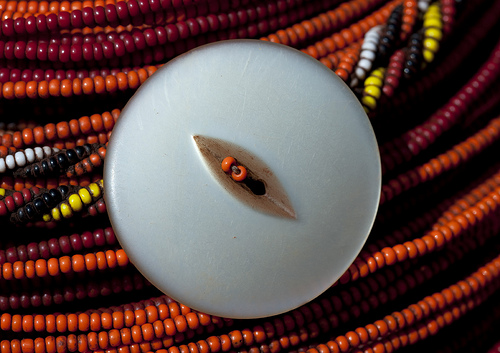
Detail of a Rendille necklace - Kenya
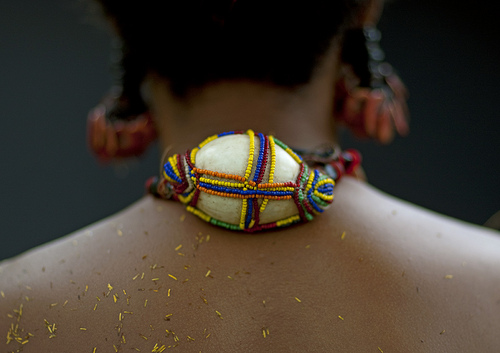
Shell jewel in Trobriand island - Papua New Guinea
OK, as a woman I just have to ask you about the jewels they are wearing… Tell me all about it!
Those jewels are external signs of their marital status. Whether they are married or not yet.
Some are just for decoration and beauty signs of course, like the pokot ears rings.
For Samburu, you can see easily if the girl is married or not, as the young ones wear beads only, not the giant necklaces made of palms and elephant hair.
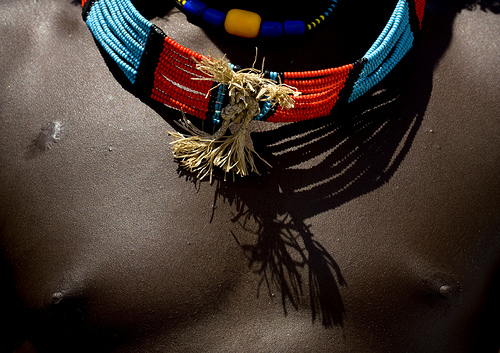
Bana Bodi Tsemay Hamer
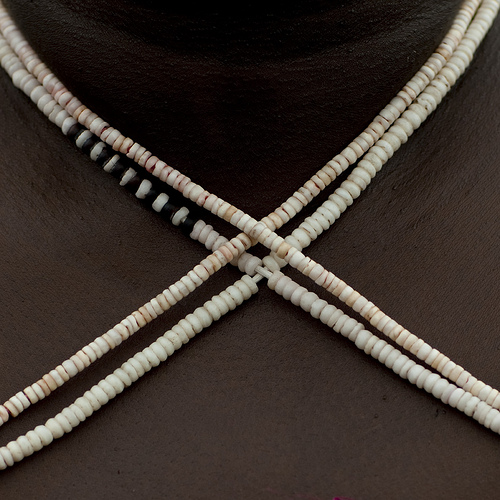
Bougainville shell money necklaces - Papua New Guinea
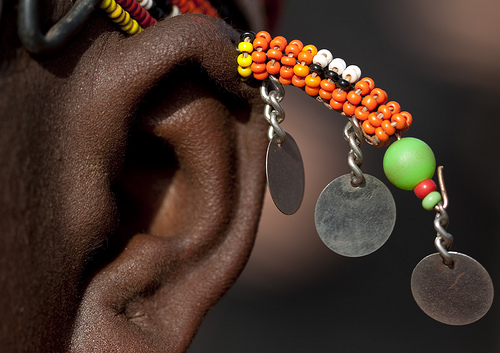
Rendille ear close up - Kenya
This one’s really adorable. Where did you find them?
This picture has been taken during a dance.
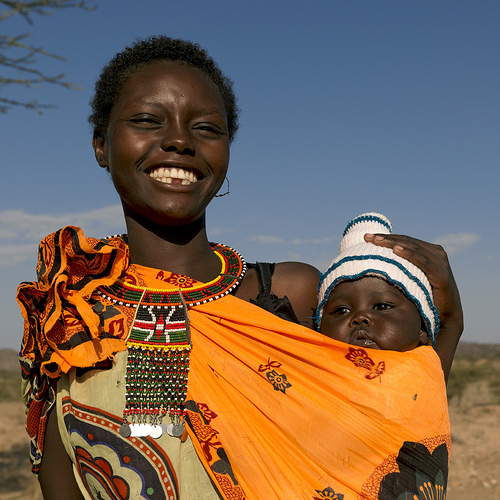
Samburu mother and kid - Kenya
The mother danced with the kid on her back. As the women do in Africa: the baby remains on the back even when the mother’s working or even when she’s dancing!
Interesting wig. Who is he? You were saying he’s also a warrior…
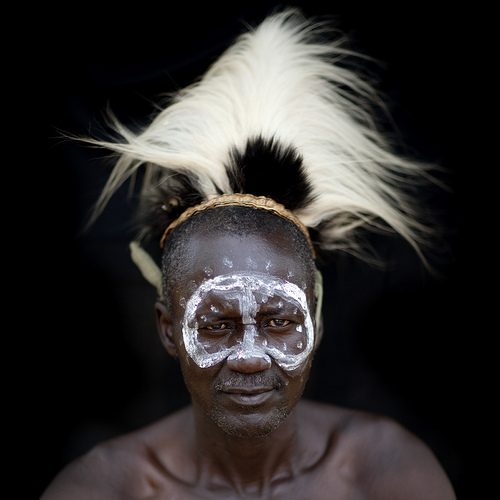
Tharaka warrior with monkey headdress - Kenya
Warrior means he takes care of the security of the village and of the cattle.
It is a social status that every man has in Tharaka tradition.
Once you are not a kid anymore, you have to show your bravery to the other members of the village, and this makes it easier for the girls to choose to marry the nicest one!
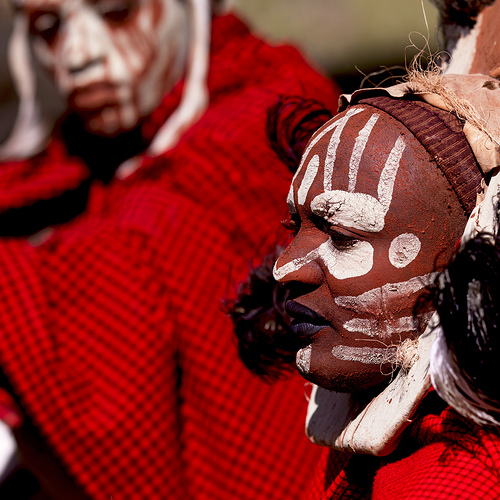
Kikuyu warriors - Kenya
You are saying that no more Kikuyu wear this make up anymore. Does this have something to do with the last civil war in Kenya?
Not really, as traditions of the Kikuyu have been lost for a long time already.
They live in the most modern part of Kenya, so the young people watch MTV!
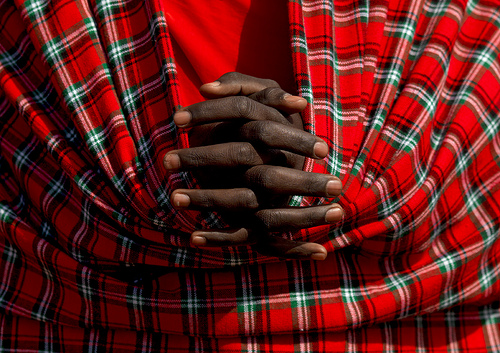
Maasai hands - Kenya
Tell me about Nkama village. You said the people there believe that Masais will
no longer exist in the next years… Why would they think that?
As Masais are located in the most touristic place of Kenya, near the animal parks, it is clear that their life is changing quickly…
If they can get money, they will try to improve their level of life and comfort.
If they can get electricity, they’ll have a TV etc… Just like Kikuyu they’ll change..
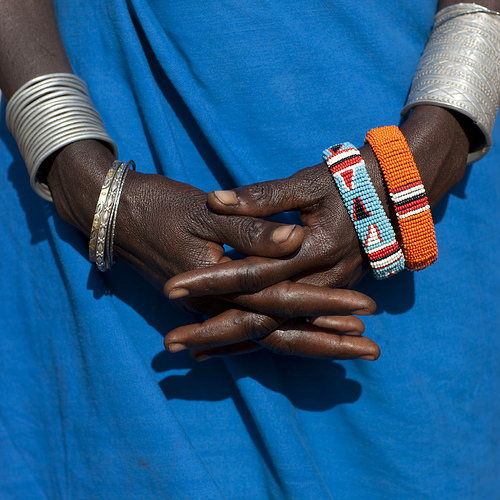
Samburu hands – Kenya
What about their dances?
The Samburu dance is nice to see as women dance together, then one by one, they come close to the audience. So you feel like being in the groove!
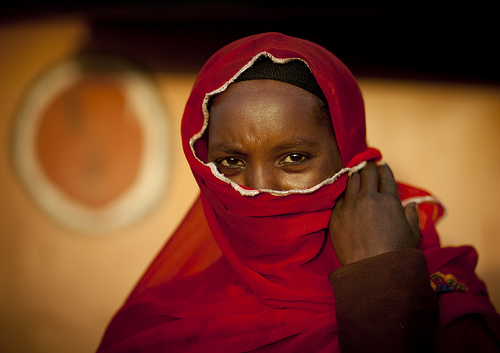
Miss Elema, Borana tribe - Kenya
I know for sure that some of the Borana people in Ethiopia (especially the women)
would not agree to be photographed and as far as I know there was something like that with this one, wasn’t it?
Borana people are mainly muslims, even if I met some catholic ones too, in the same villages.
So women tend to refuse pictures, according to the religion.
But sometimes after a chat they are proud to show their beauty to the photographer! Like any woman in the world!
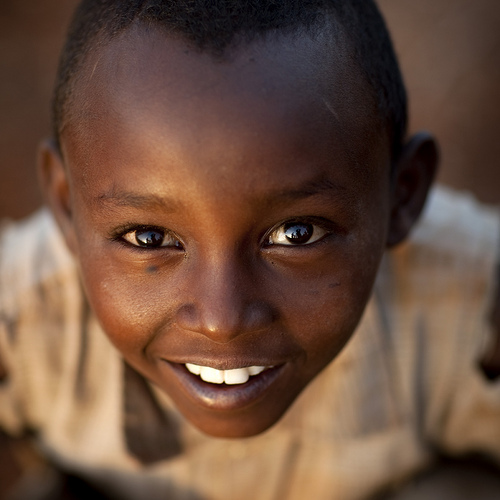
Borana kid - Kenya
What did you learn about the Gabbra?
Gabbra are still living in remote and a desert place (12 hours to go in 4 wheels, on a sand road, so few tourists!)
They have strong traditions and are really proud people, looking very different from the Kenyan tribal image we can have. But they are part of the country!
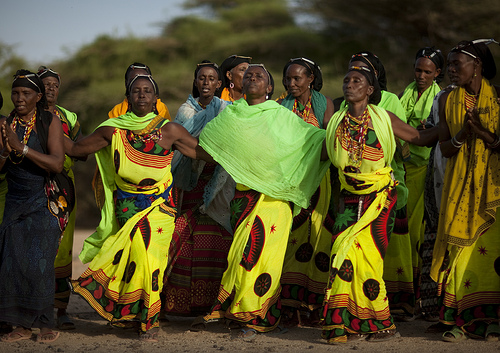
Gabbra women - Kenya
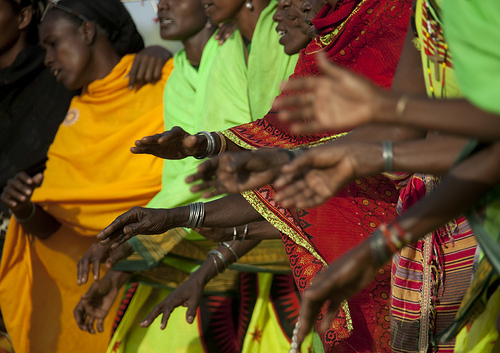
Gabbra women dance - Kenya
You are saying the Turkana tribe was the most beautiful tribe for you… Why so?
Because they still wear some animal skin and lots of jewels which makes them look so beautiful and so unique.
They have naturally beautiful faces and they are tall too.
Many pictures of Turkana people are labeled as Masai on the web, it’s a big mistake!
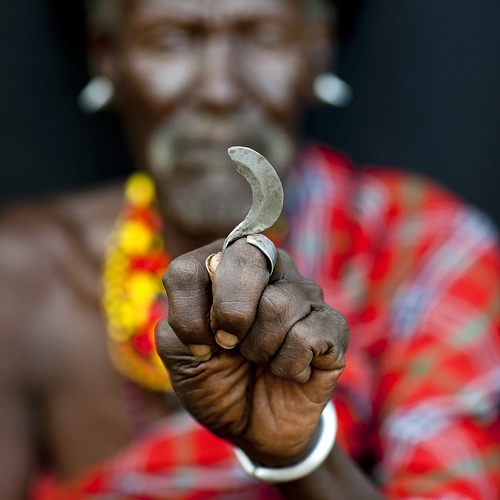
Turkana tribe secret weapon - Kenya
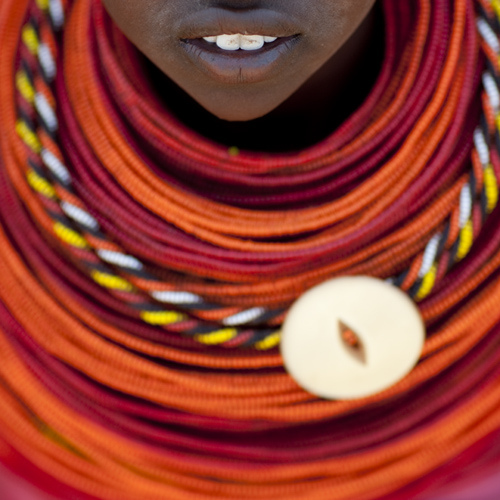
Rendille tribe girl - Kenya
I would like to see a traditional dress of a Tharaka tribe… I’ve seen it once – it looks beautiful!
Tharaka tend to lose their traditions, but some still maintain them. The dress is nice, made of cow and goat leather. The old people try to teach these traditions to the young ones.
This is the Chepilat Pokot village chief. Tell me more about what he’s holding in his
hand – the traditional seat/pillow in wood!
He has the seat pillow that every man has in the country! No man will seat on the ground, they always use a seat. Some think it is to protect themselves from snakes, and mainly for comfort!
The men who make a special haircut (made with clay to put some feathers on the head) use the seat as pillow, too.
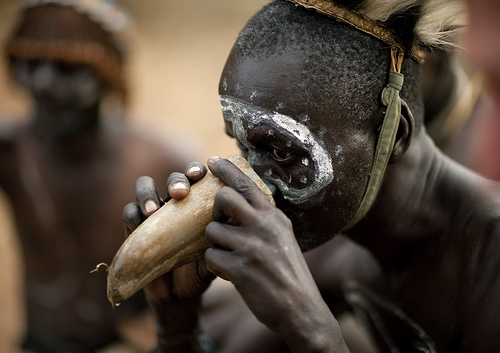
Beer time in Tharaka - Kenya
You’ve had some trouble with your visa and you had to stay a bit longer. I believe you are not sorry at all… But please let’s end this conversation with
the funny thing that happened to you in the “best hotel” of this area!
The funny thing is that I almost died because of an electric wire in a bathroom! It is funny now as I did not die!
It was in the only “luxury” hotel in Turkana! You can imagine how luxury it was!
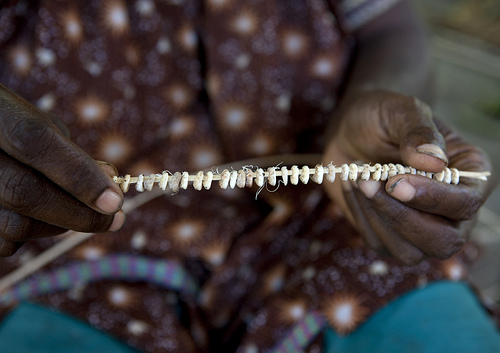
Making some shell money - Papua New guinea
I’m not sure I want to… (laughing) Thank you for this interview!











3 comments so far ↓
Nobody has commented yet. Be the first!
Comment